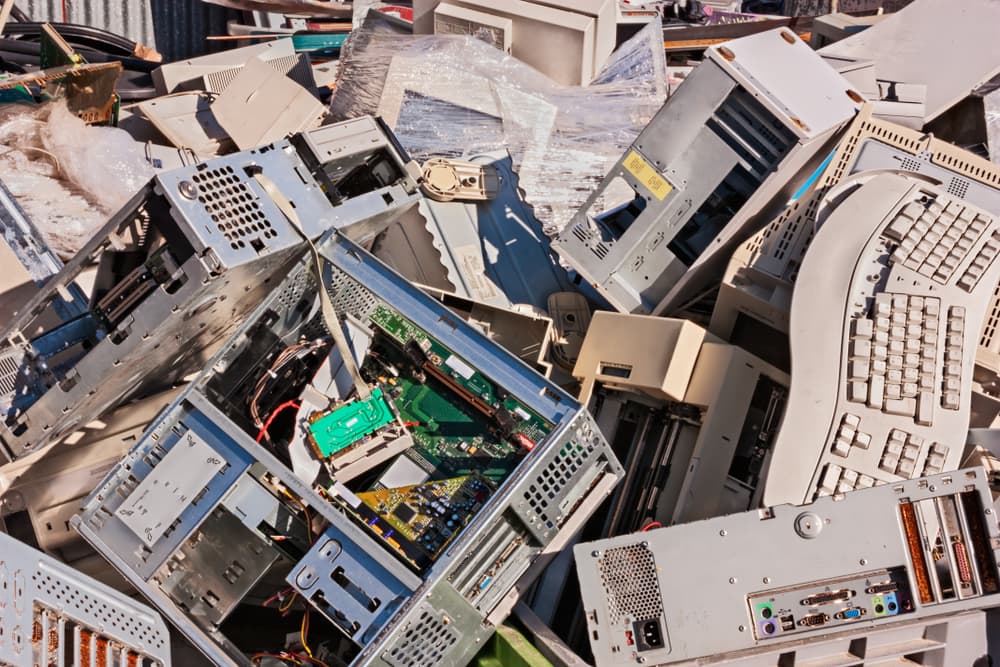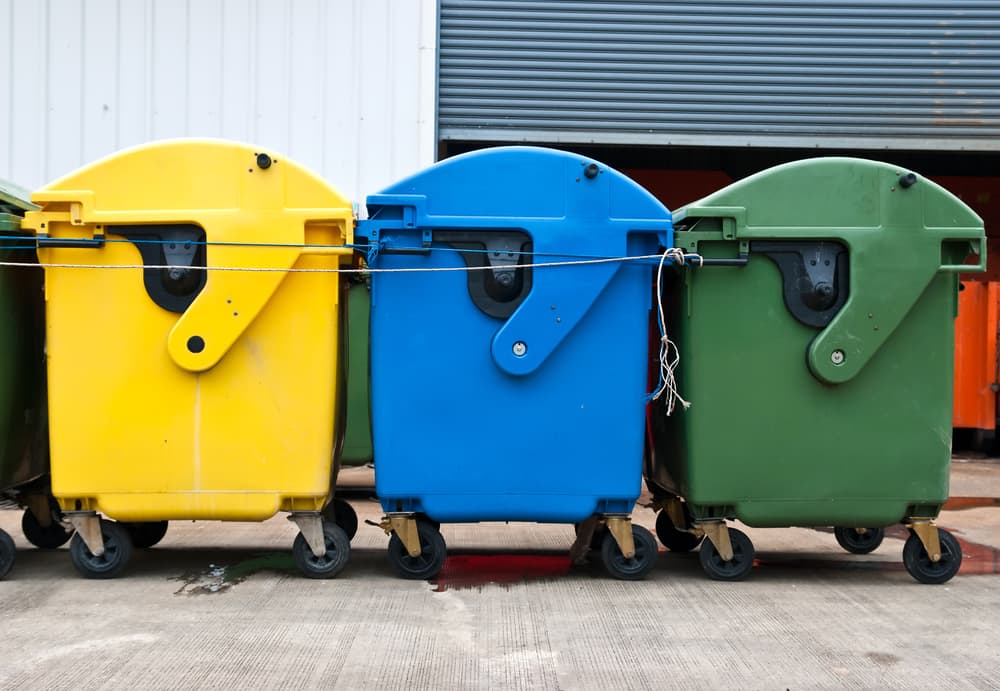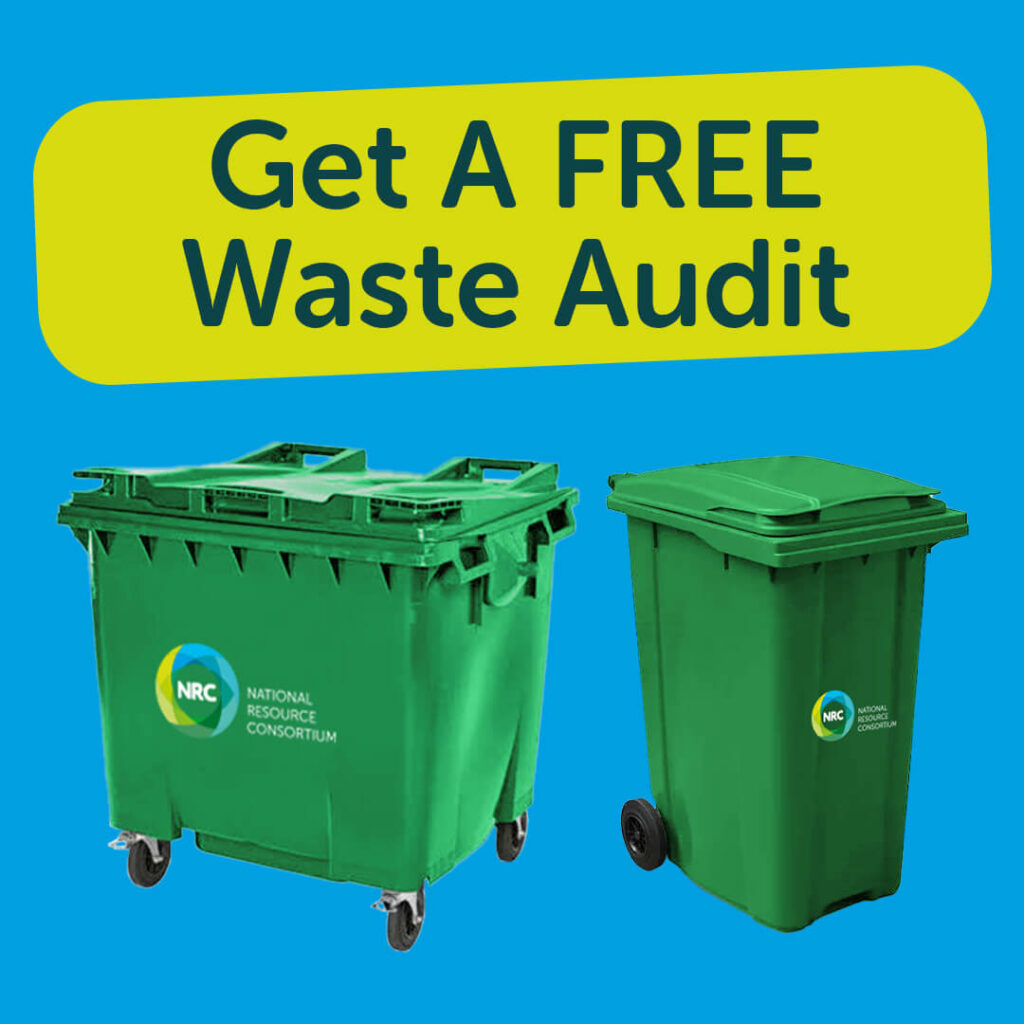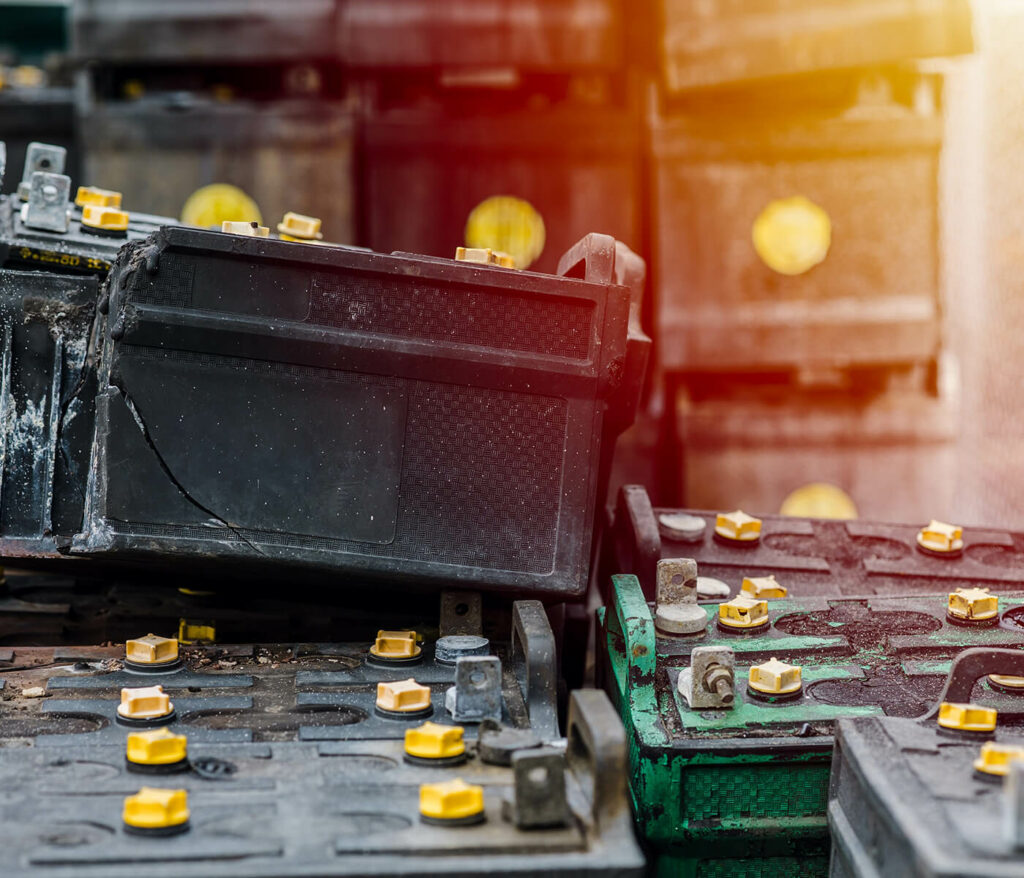May 9th, 2024

In a world where electronic devices reign supreme, we’re all left with the same question – what happens to our electronics after we throw them away?
Well, this is where the WEEE Directive comes in. It’s more than just a policy and encourages people to take a responsible approach to electronic waste. In short, it makes sure that the end of life for our gadgets doesn’t spell disaster for the environment.
If you’re wondering how you can handle your business’s WEEE waste in a sustainable, efficient way, read on or give our teams a call today.
This guide covers:
- The purpose of the WEEE Directive
- WEEE Waste and the Environment
- Important regulations of the WEEE Directive
The Purpose of the WEEE Directive
The WEEE Directive, short for Waste Electrical and Electronic Equipment Directive, is a legislation introduced by the European Union aimed at regulating the disposal of electronic equipment (European Commission).
The directive defines electronic waste as any discarded equipment that relies on electric currents or electromagnetic fields for its intended function. So, essentially, anything that has a plug can be considered WEEE waste.
This includes a wide range of products, such as:
- Household appliances (e.g. fridges, TVs, kettles)
- Telecommunications equipment (e.g. mobiles and other phones)
- Electronic tools (e.g. drills and saws)
Under the WEEE Directive, electronic waste has to be collected and disposed of separately, so the valuable raw materials inside can be recycled and the hazardous materials controlled.
By implementing producer compliance schemes, setting recovery and recycling targets, and preventing illegal waste exports, the WEEE Directive ensures that businesses are responsible for the proper treatment of waste electronic products.
Additionally, the directive encourages the design of electrical and electronic equipment with a focus on easier dismantling, reusability, and recycling. This supports the transition towards a more sustainable and circular economy.
WEEE Waste and its Impact on the Environment
WEEE waste, also commonly known as e-waste, is a growing global concern due to its impact on the environment. With the increasing number and variety of electronic products, and the toxic materials within them, effectively managing and disposing of e-waste has become a big challenge.
Toxic substances found in electronics include:
- Lead
- Mercury
- Cadmium
- Flame retardants
These substances are found in many electronic devices, the improper disposal of which can lead to their release into the environment, causing air, soil, and water pollution. This, in turn, results in serious health risks for both humans and wildlife.
That being said, e-waste also contains valuable metals and raw materials that can be recovered and reused. Through advanced recycling processes and material recovery, these secondary resources can be extracted for further use. This not only reduces the demand for virgin resources but also decreases the environmental impacts associated with their extraction and production.
Regulations Under The WEEE Directive
The Waste Electrical and Electronic Equipment (WEEE) Directive has a broad scope, covering a wide range of electrical and electronic equipment (EEE) products.
The Scope of the Directive
All types of e-waste fall under the WEEE Directive, with few exceptions, including:
- Household appliances
- Electronic tools
- Telecommunications equipment
- Photovoltaic panels (solar panels)
- Smoke detectors
The aim is to prevent hazardous materials from entering landfills and to promote the recovery of valuable raw materials.
To help implement the directive, e-waste is categorized into six main groups, including:
- Large household appliances
- Small household appliances
- IT and telecommunications equipment
- Consumer equipment
- Lighting equipment
- Electrical and electronic tools
This covers anything from washing machines to power drills. By grouping EEE products into categories, the WEEE Directive helps ensure a systematic approach to their disposal. It also promotes compliance among producers and establishes recovery and recycling targets.
Producer Responsibility Requirements & Compliance Schemes
Under the WEEE Directive, EEE producers are responsible for properly managing and disposing of products at the end of their life cycle, also known as “producer responsibility”.
Producers have several obligations to make sure they comply with the WEEE Directive.
First, they must register and provide relevant information to their local authority about the types and quantities of EEE products they place on the market.
They should also declare the environmental and recycling efficiency of their products, ensuring transparency and accountability on their part. Similarly, they are responsible for setting up and financing EEE recycling systems for products that have reached the end of their life.
Compliance schemes play a crucial role in helping producers with meeting their obligations under the WEEE Directive. These schemes offer services such as collection and recycling of EEE waste on behalf of producers.
Collection, Recycling & Recovery Targets for WEEE
The WEEE Directive sets specific collection, recycling, and recovery targets to reduce the environmental impacts of this waste stream. These targets aim to reduce the amount of WEEE that ends up in landfills and incinerators, and promote the recovery of valuable raw materials. This includes the precious metals and rare earth elements that can be reused in making new equipment.
Overall, the aim of these targets is to ensure WEEE waste is properly managed, its environmental impact lowered, and promoted into a more circular economy.
Separate Collection and Treatment Requirements
Under the WEEE directive, member states of the European Union are required to establish systems for the separate collection of waste electrical and electronic equipment. This means that consumers should have accessible and convenient ways to dispose of their electronic devices, and these devices should be collected separately from other types of waste.
Member states are also encouraged to promote the recovery, reuse, and recycling of electronic equipment to minimize the environmental impact.
This includes the need for appropriate treatment of hazardous substances, such as mercury and lead, which are commonly found in electronic devices. The aim is to ensure that these hazardous materials are handled properly to protect both human health and the environment.
WEEE Waste Management with NRC
It’s clear that this legislation isn’t just about managing waste—it’s about reshaping the way we view the gadgets in our lives and businesses. The Directive champions a future where every gadget can be more than just a one-hit-wonder, aiming to live on through recycling, recovery, and responsible waste disposal.
Are you looking for a sustainable, efficient and cost effective way to handle your WEEE waste? You’re in the right place.
Let the experts at NRC do the heavy lifting for you – get in touch today for a free quote and waste audit.





